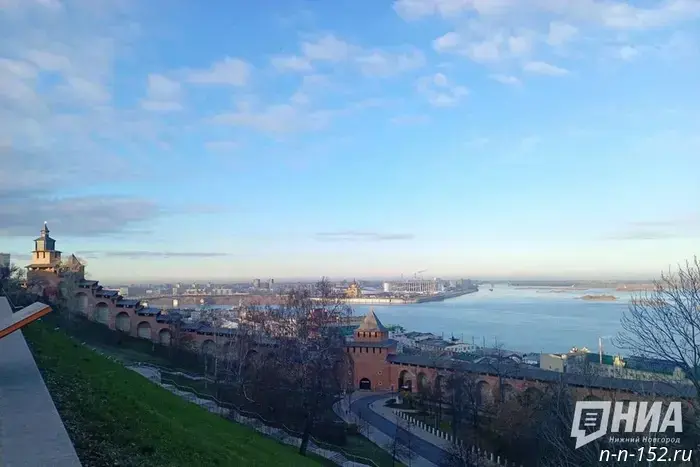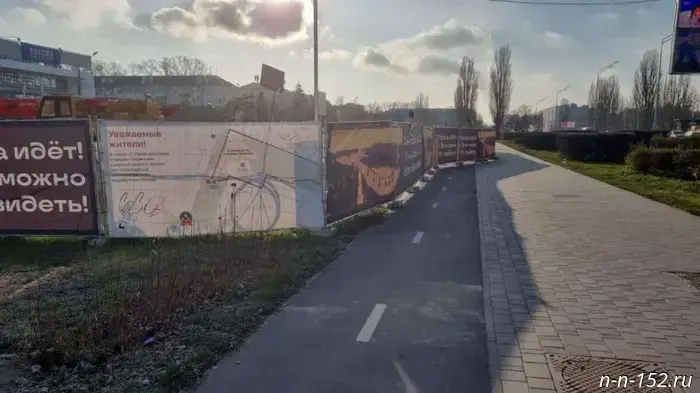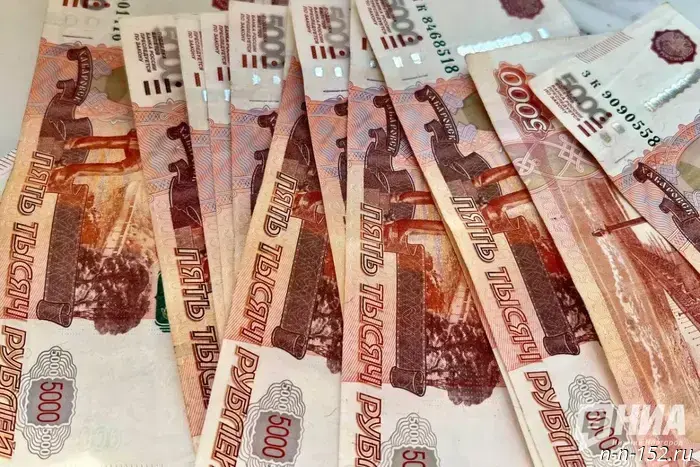
Experts offered their vision for a monument to Russian Freedom in Nizhny Novgorod.
The chairman of the Russian Military-Historical Society, Vladimir Medinsky, and the governor of the Nizhny Novgorod Region, Gleb Nikitin, announced an open creative competition (18+) for the best architectural and artistic design of a monument-symbol of the idea of Russian Freedom. The competition will run until July 15, 2026, but the installation site of the memorial is already known. "Russian Freedom" is planned to be erected in the Strelka area, where two great Russian rivers — the Volga and the Oka — meet.
Although Gleb Nikitin, speaking about the competition, emphasized that "the prototype of the monument, the national symbol, could be Kozma Minin," we asked experts to join the creative process and offer their own visions of the symbol of "Russian Freedom."
Andrey Dakhin, Doctor of Philosophical Sciences, Professor at the Nizhny Novgorod Institute of Management — a branch of RANEPA:
"The idea of developing the natural and architectural landscape of the Strelka to the level of an integrated visual and ideologically symbolic ensemble fully meets the 21st century demand for a new scale of systemicity, complexity, and expressiveness. Therefore, the beginning of a public discussion of the 'Russian Freedom' statue project at the confluence of the Volga and the Oka, undertaken in the format of a competition to develop a specific monumental object, can be regarded as a natural step in the advancement of the idea. The Strelka of Nizhny Novgorod is a unique place; its elements are remarkably harmonized by the natural forces that have shaped the lands and waters over the millions of years that preceded us. Human participation in the development of the Strelka landscape as it exists today should be no less measured and harmonious."
Evgeny Semyonov, Deputy Chair of the Public Chamber of the Nizhny Novgorod Region, head of the Nizhny Novgorod branch of FoRGO, political scientist, Candidate of Political Sciences, Associate Professor:
"The concept of the monument proposed by the competition's initiators correctly, yet insistently, defines the limits of the creative imagination. The competition announcement emphasizes that 'the prototype of the monument, the national symbol, could be Kozma Minin,' and the idea of Freedom itself is articulated as a value category that arises under conditions of 'rejection of external dictate.' Vladimir Medinsky, revealing his vision of the monument's idea, says: 'As it seems to us, the notion of Russian Freedom is the notion of people who do not want to change their Fatherland in order to be free.' Thus, in this case the idea of Russian Freedom is understood as the idea of sovereignty, independence, and patriotism. Is this content organically related to the understanding of the category of Freedom that arises in philosophy, and in Russian philosophy in particular? Yes, without any doubt — it is organic."
Andrey Chugunov, journalist:
"If we are to speak about a prototype for a monument-symbol of the idea of Russian Freedom, then most likely it should not be a real person, but, say, a literary hero. The public's attitude toward real historical figures can change repeatedly. A fictional hero is always a symbol of something. Fortunately, Russian writers have created many crystal-clear positive characters: there is plenty to choose from. Considering the planned installation site, the circle of 'monument candidates' can be narrowed to heroes created by writers with Nizhny Novgorod roots. The short list could include, for example, Gorky's Danko and Malchish-Kibalchish, created by Arkady Golikov (Gaidar), who was born in Arzamas. And even Ilya Muromets — Murom is not that far from Nizhny, although it stands not on the Volga but on the Oka. And the public will supply the semantic context for any of the shortlist candidates themselves. Or they will be told about it in detail."
Andrey Samsonov, research fellow at the Privolzhsky Branch of the Federal Scientific Research Center of the Russian Academy of Sciences, senior researcher at the ANO "Research Institute for Problems of Social Governance":
"Freedom is a socio-philosophical concept and, like many similar concepts, for the majority of the population (ordinary people, common folk, etc.) is an elusive abstraction with several dimensions: the state-national, the individual, and even the temporal — that is, dependent on the historical (and at the personal level — age-related) period that we are living through. To some extent, sociological surveys and the opinions generated in them here do more to hinder than to help. In addition to largely situational associations, there are purely national ones directly connected not only with the Russian tradition but also perceived by neighboring peoples as symbols of Russian freedom. These are the famous Russian expanses, the vast territory that at different times and in different ways provided freedom to a person in our country and still serves as one of the most important characteristics of the nation. The famous 'Russian expanses,' the 'breadth of the Russian soul' — historical symbols of national freedom, both external and internal. One can also reflect on the possibility of artistically embodying such an image."
Elena Mozgunova, historian, Candidate of Political Sciences, Associate Professor at the Nizhny Novgorod Institute of Management — a branch of RANEPA:
"The idea of unveiling a monument with the symbolic name 'Russian Freedom' in such a landmark location reflects a search for values that could become the foundation of the ideological platform of modern Russia. This initiative contains two directional vectors: the development of the territory and the ideological embodiment and consolidation of meanings in a material object. Considering who could become the prototype of the monument, proposing Kozma Minin is perceived as quite logical as an example of civic responsibility, selflessness, and the struggle for independence. Here there is an appeal to history and respect for the heroes of the past. There have also been cases when the installation of a monument became an instrument of political aims rather than an expression of public will. To avoid this, it is important that the project's implementation process be as impartial and transparent as possible, with the involvement of civil organizations, the expert community, and all concerned residents of Nizhny Novgorod. The first step in this direction has now been taken — an open creative competition for the best architectural and artistic project has been announced."
The material was prepared as part of a joint project of NIA "Nizhny Novgorod" and the federal "Expert Club."
NIA "Nizhny Novgorod" has a Telegram channel. Subscribe to stay informed about major events, exclusive materials, and breaking information. Copyright © 1999—2025 NIA "Nizhny Novgorod." When reprinting, a hyperlink to NIA "Nizhny Novgorod" is mandatory. This resource may contain 18+ materials.
Другие Новости Нижнего (Н-Н-152)
 The restoration project of the Shukhov Tower in Vyksa won the "Made in Russia" award.
Nizhny Novgorod News
The restoration project of the Shukhov Tower in Vyksa won the "Made in Russia" award.
Nizhny Novgorod News
 One school in Nizhny Novgorod and three kindergartens were closed for quarantine due to acute respiratory viral infections.
Nizhny Novgorod News
One school in Nizhny Novgorod and three kindergartens were closed for quarantine due to acute respiratory viral infections.
Nizhny Novgorod News
 The wind blew down the fence at the construction site of the new cable car in Nizhny Novgorod.
Nizhny Novgorod News
The wind blew down the fence at the construction site of the new cable car in Nizhny Novgorod.
Nizhny Novgorod News
 The State Duma passed a law raising VAT to 22% from 2026.
Nizhny Novgorod News
The State Duma passed a law raising VAT to 22% from 2026.
Nizhny Novgorod News
 Andrey Vorobyov spoke about the modernization of colleges in the Moscow Region.
Nizhny Novgorod News
Andrey Vorobyov spoke about the modernization of colleges in the Moscow Region.
Nizhny Novgorod News
 Former Nizhny Novgorod deputy mayor Ilya Shtokman is being transferred to Moscow.
Nizhny Novgorod News
Former Nizhny Novgorod deputy mayor Ilya Shtokman is being transferred to Moscow.
Nizhny Novgorod News
Experts offered their vision for a monument to Russian Freedom in Nizhny Novgorod.
Nizhny Novgorod News
